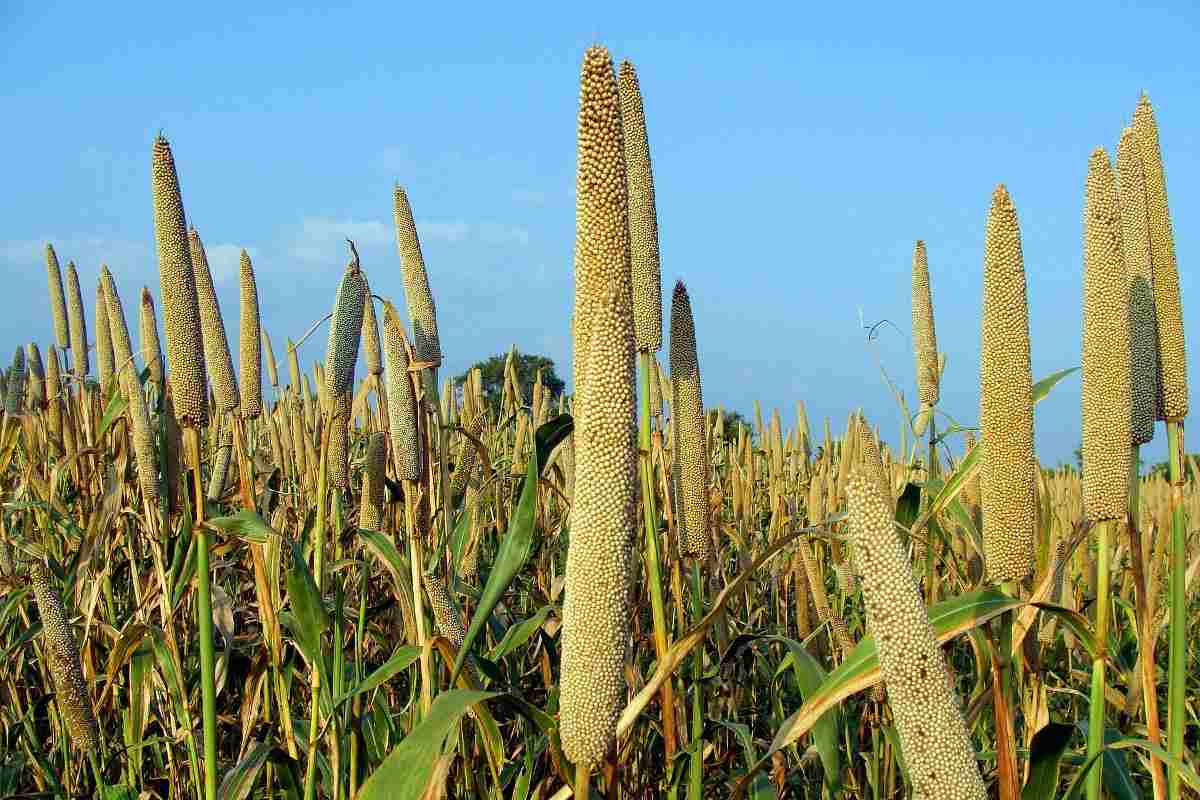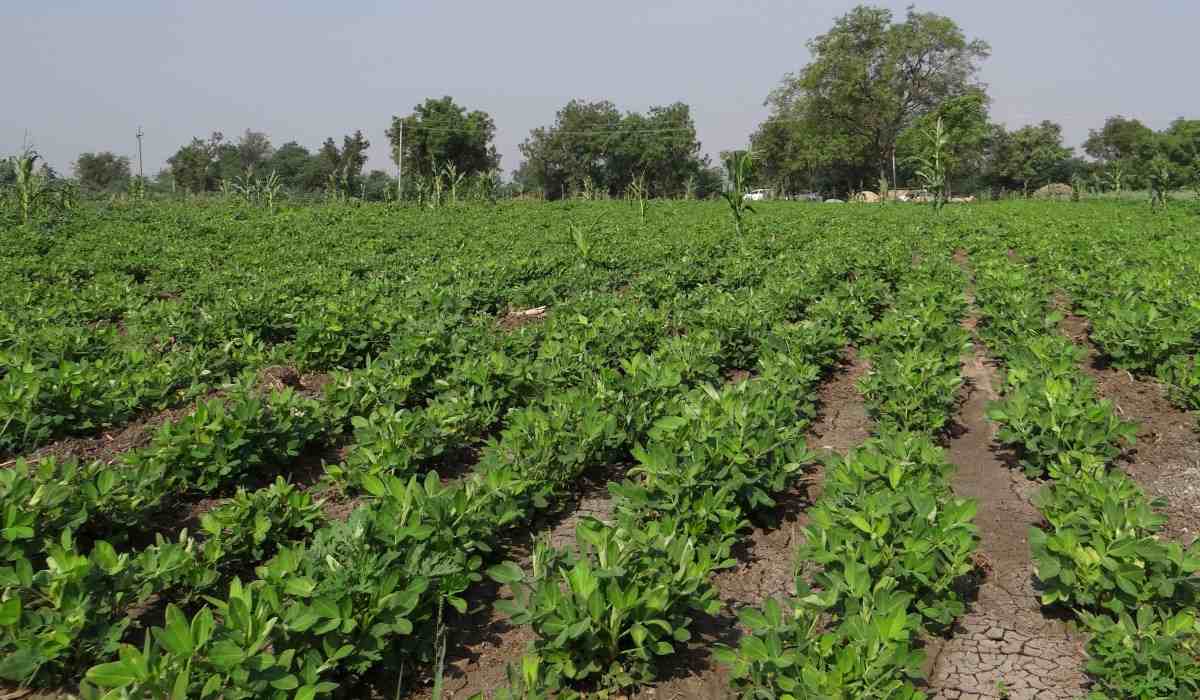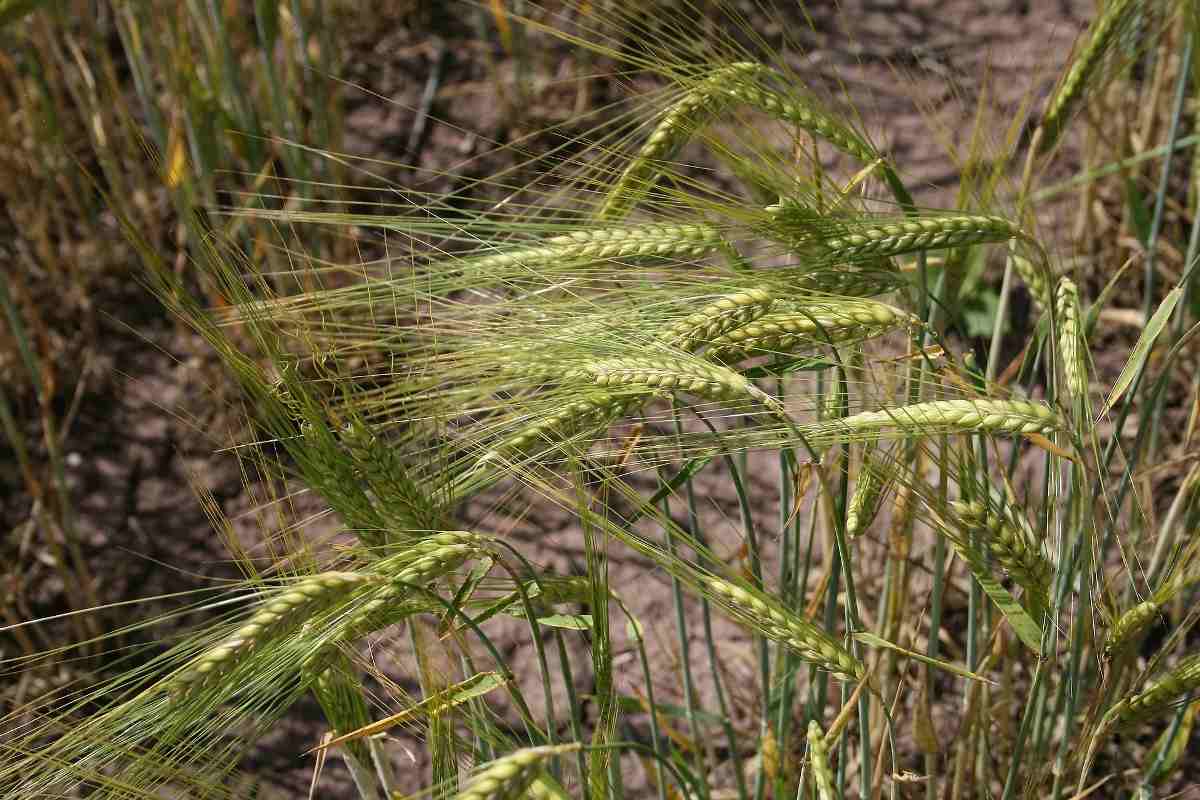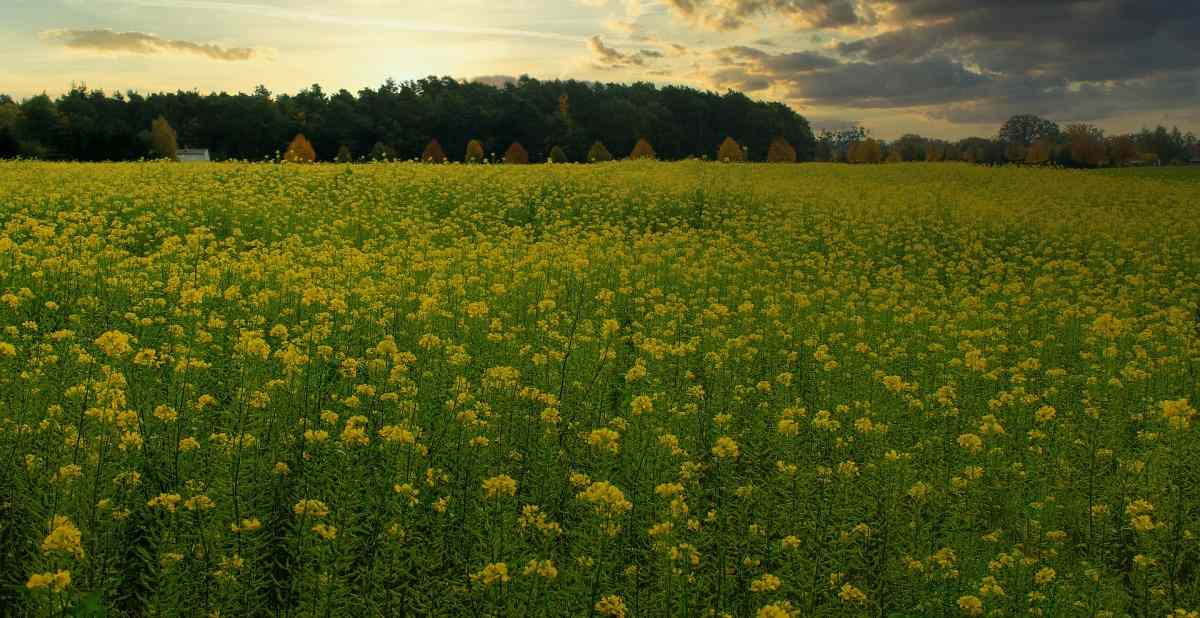Introduction to Kharif and Rabi crops
All crops in India do not grow in the same season. Different crops have specific requirements and suitable climatic conditions. Based on the climatic conditions, crops in India are classified into two categories;
- Kharif crops
- Rabi crops
A step by step guide to Kharif and Rabi crops in India
The crops that are sown in the rainy season are called Kharif crops and it is also known as the summer or monsoon crop in India. The crops that are sown in the winter season are called Rabi crops are also known as the “winter crop” in Pakistan and India. The Rabi means, when the crop is harvested and crops that are grown in the winter season, from November to April are called Rabi Crops. Some of the important Rabi crops are wheat, barley, rapeseed, peas, gram, and mustard.
Kharif crops in India
The Kharif cropping season starts with the onset of the Indian subcontinent’s monsoon. Kharif crops are sown at the beginning of the first monsoon rains (depends on region to region). Harvesting season begins from the 3rd week of September to October (the exact harvesting dates differ from region to region). Unlike Rabi crops, Kharif crops require good rainfall. The output of these crops mainly depends upon the time and amount of rainwater. Paddy, Maize, Bajra, Millet, Cotton, Ragi, and Jowar are a few of the Kharif crops grown in India. The Kharif crops are associated with the monsoon season. They are sown in June and July and are harvested in autumn months that means in September and October.
Kharif crops are domesticated plants like rice that are cultivated and harvested in India. Monsoon rains may begin as early as May in some parts of the Indian subcontinent, and crops are harvested from the 3rd week of September to October, again depending upon the region and the crops.

The Kharif season varies by crop, starting at the earliest in May and ending at the latest in January. In India, the Kharif season is considered to start in June and to end in October. Kharif crops are sown with the beginning of the first rains during the advent of the south-west monsoon season, and they are harvested at the end of monsoon season (October-November). These Kharif crops are dependent on the quantity of rainwater as well it’s timing. Too much, too little or rain at the wrong time can lay waste to the whole year’s efforts. Kharif crops stand in contrast to the Rabi crops, and which are cultivated during the dry season.
Common Kharif crops are;
Cereal crops – Rice, Bajra, Jowar, Maize (corn), Millet, and Soybean.
Fruit crops – Muskmelon, Sugarcane, Watermelon, and Orange.
Seed/Grain crops – Arhar (Tur), Black gram (Urad), Cotton, Cowpea (Chavala), Green gram (Moong), Groundnut, Guar, Moth bean, Mung bean, Sesame, and Urad bean.
In case if you miss this: Organic Hydroponics Farming, Cultivation Practices.

Vegetable crops – Bitter gourd (karela), Bottle Gourd, Brinjal, Chili, Ladyfingers, Sponge Gourd, Tinda, Tomato, Turmeric, and French Beans.
Rabi crops
Rabi crops or Rabi harvest are crops that are sown in winter and harvested in the spring in India and Pakistan. The term Rabi is derived from the Arabic word for “spring”, which is used in the Indian subcontinent, where it is the spring harvest is also called the “winter crop”.
Rabi crops are known as winter crops and they are grown in October or November. The Rabi crops are then harvested in spring. These crops need frequent irrigation because these are grown in dry areas. Wheat, gram, barley, peas, pulses, mustard, and rapeseed are some of the major Rabi crops grown in India. The crops are grown with rainwater that has percolated into the ground or using irrigation. Good rain in winter spoils the Rabi crops but is good for Kharif season crops.
The major Rabi crop in India is wheat and followed by barley, mustard, sesame, and peas. The agriculture crops formed in India are seasonal and highly dependent on these two monsoons.
Common Rabi crops are;
Cereal crops – Barley, Gram, Rapeseed, Mustard, Oat, Wheat, and Bajra.
You may also check this: Aquaponics Farming Business Plan for Profits.

Fruit crops – Almond, Banana, Ber, Dates, Grapes, Guava, Kinnow, Lemon/Citrus, Mandarin orange, Mangoes, Mulberries, and Orange.
Legumes/lentils (dal) crops – Chickpea Kulthi, Lobias, Masoor, Mung Bean, Pigeon Pea, Toria, and Uradbean.
Seed/Grain crops – Alfalfa, Coriander, Cumin, Fenugreek, Linseed Mustard, Isabgol, Sunflower, Bengal Gram, Red Gram.
Vegetable crops – Beans, Beetroot, Brinjal, Broccoli, Cabbage, Capsicum, Carrot, Cauliflowers, Chickpea, Fenugreek, Garlic, Ladyfinger, Lettuce, Pea, Onion, Potato, Radish, Spinach, Sweet Potato, Tomato, and Turnip.
Differences between Kharif and Rabi crops
Some of the key differences between Kharif and Rabi crops are;
- Kharif crops are also called as monsoon crops or autumn crops, while Rabi crops are also known as spring or winter crops.
- Kharif crops are affected by rainfall, as these plants need lots of water to grow. On the contrary, Rabi crops do not have any effects on monsoon.
- Kharif crops are the crops that are sown at the beginning of the rainy season, which means between April and May. While Rabi crops are the crops that are sown at the end of monsoon or at the beginning of winter season, e.g. between September and October.
- Favorable sowing season for the Kharif crops is June – July, while Rabi crops are sown in the month’s March – April
- Harvesting month of the Kharif crops is September – October, whereas Rabi crops are harvested in March – April.
- Kharif crops depend on rainfall patterns. While Rabi crops are not affected by the rainfall.
- Kharif crops need hot weather and a large amount of water to grow. Whereas, Rabi crops need a warm climate for germination of seed and cold climate for growth.
- In the case of Kharif crops, wet and warm weather and shorter day length are favorable for the flowering, whereas in the case of Rabi crops need dry and cold weather and longer day length is beneficial for flowering.
- Major Kharif crops are Rice, Maize, Cotton, Jowar, And Bajra, Etc. Whereas Major Rabi Crops Are Wheat, Gram, Peas, And Barley, Etc.
- In Kharif crops flowering requires shorter day length. While Rabi crops flowering requires longer day length.
Some of the important Kharif crops in India
Rice
India is the second-largest producer of rice crop in the world after China. India accounts for about 20% of the world’s rice production. It is a staple food pan India, and its cultivation is also widespread across the country. It is the most important Kharif crop of India and it is grown in rain-fed areas with hot and humid climates, especially the eastern and southern parts of India. Rice requires a temperature of 16–20°C during the growing season and 18–32°C during ripening. It needs rainfall from 59–79 inches and needs a flooded field during the growth period.
Rice prominently grows in high rainfall areas. It requires average temperatures of 25°C and a minimum of 100 cms of rainfall. It’s traditionally grown in waterlogged rice paddy fields. Northeast plains and coastal areas are the major rice-producing areas of the country. Rice is best suited to regions of high temperature, high humidity, prolonged sunshine, and assured water supply. A temperature range of 20 to 37.5°C is required for its optimum growth. The crop requires a higher temperature at tillering but the temperature requirement for blossoming ranges between 26.5 and 29.5°C. Rice can grow well on soils with low permeability and over a wide range of soil reaction pH levels 5 to 9. Normally, the loamy soils are the best for rice cultivation.
Maize
After rice and wheat, maize is also the most important cereal crop in India. Cultivation of maize crop is focused in the regions of Andhra Pradesh and Karnataka. It requires temperatures in the range of 21°C to 27°C and rainfall of between 50 to 75 cms.
Maize crop requires considerable moisture and warmth from germination to flowering. The most suitable temperature for germination is 21°C and for growth is 32°C. Proper drainage of excess water during rains is essential to get good crop yield. Maize thrives better on well-drained, sandy-loam to silty-loam soils.
Some of the important Rabi crops in India
Wheat
India is the second-largest producer of wheat in the world and it is highly dependent on Rabi crop for its agricultural income. It is a staple food among Indians, especially in the northern regions. It requires cool temperatures during its growing season in the range of about 14°c to 18°C. Rainfall of about 50 to 90 cms is most ideal. Though, during harvesting season in the spring, wheat requires bright sunshine and slightly warmer weather.
Indian wheat is largely a soft or medium-hard, medium protein, white bread wheat, somewhat similar to U.S. hard white wheat. Wheat grown in central and western India is hard, with high protein and high gluten content. India also produces around 1.0 to 1.2 million tons of durum wheat, mostly in the state of Madhya Pradesh.
It is grown in a variety of soils of India. Soils with a clay loam soil or loam texture, good structure, and moderate water holding capacity are ideal for wheat cultivation. Care must be taken to avoid very porous and excessively drained soils. The soil must be neutral in its reaction. Heavy soils with poor structure and poor drainage are not appropriate as wheat is sensitive to waterlogging. It can be successfully grown on lighter soils provided their water and nutrient holding capacity are improved.
Mustard

Mustard Crop. Mustard belongs to the ‘Cruciferae’ family and the oil extracted from mustard is edible, and so, in India, we use mustard for cooking purposes. Mustard requires a subtropical climate to grow which is dry and cool weather. The temperature level to grow mustard is between 10°C to 25°C and Rajasthan has the largest production of mustard in India.
The mustard crop is a cool-season crop that can be grown in a short growing season. Varieties of yellow mustard mature in 80 to 85 days whereas brown and oriental types require 90 to 95 days. Seedlings are somewhat tolerant of mild frosts after emergence, but severe frosts can destroy the crop. Mustard, particularly the brown and oriental types, has a partial drought tolerance between that of wheat and rapeseed. Moisture stress caused by hot, dry conditions during the flowering period frequently causes lower crop yields.
In case if you are interested in How to Make Money from Organic Farming Business.
Thank you for the detailed and vivid explanation.